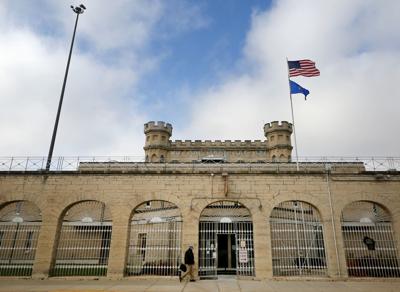The death sentence is usually reserved for people who commit truly horrific crimes. But over the past year, COVID-19 has spread rapidly through our nation’s prisons. Every prisoner now faces the possibility of a death sentence.
Even so, Republican legislators in Wisconsin are resistant to giving prisoners the vaccine. Assembly Speaker Robin Vos has suggested that prisoners don’t deserve to be vaccinated against COVID-19 despite the fact that they are at greater risk of infection and death from the virus than the general public. In his Republican response to Gov. Tony Evers’ State of the State address, Vos pointed out that the State Disaster Medical Committee responsible for considering factors related to COVID-19 vaccine distribution “decided prisoners should get the vaccine before your 65-year-old grandmother,” and then encouraged people to let the committee know what they thought about that decision. More recently, some Republican lawmakers have introduced legislation that would go so far as to bar the prioritization of prisoners for vaccination.
While not saying so explicitly, it seems clear that Speaker Vos and his fellow Republican legislators are arguing that prisoners don’t deserve to receive the vaccine, at least not before other members of society they deem more deserving. This argument, that some people have a moral claim to the vaccine over others, is problematic to say the least.
The responsible way to make decisions about distributing the vaccine is to ask: Who is at greatest risk of infection and therefore the most likely to spread the virus? This is exactly the strategy that the Centers for Disease Control endorsed when they announced guidelines for the distribution of the COVID-19 vaccine that would maximize benefits and minimize harm, promote justice and mitigate health inequalities.
There is no debating the known fact that COVID-19 spreads rapidly in congregate settings where social distancing is difficult. There is also no question that prisons epitomize this setting. Prisons are overcrowded, confined spaces where personal hygiene is difficult to maintain due to a lack of adequate facilities and even some prison regulations themselves. For example, alcohol-based hand sanitizer is considered contraband in many prisons.
In March of last year, experts predicted that once COVID-19 got inside prison walls it would spread quickly because the conditions inside prisons made an ideal petri dish for the virus. By April, that prediction started coming true when the largest COVID-19 outbreak in the United States outside of a hospital was in the Cook County Jail.
In the intervening months, COVID-19 has ravaged our prison population. A recent report from the Marshall Project found that one in five prisoners in the United States has had COVID-19. By comparison, one in 20 people in the general population have been infected with the virus. The report also found that in addition to the significantly higher rates of infection among prisoners, people in prison die from COVID-19 at three times the rate found in the general population. Likewise, a study from the National Commission on COVID-19 and Criminal Justice found the infection rate three times higher in the prison population as compared to that of the general public, with a doubled mortality rate. It also found that at least 275,000 incarcerated people have tested positive for COVID-19, and more than 1,700 have died.
While prisoners might be confined to the prison grounds, corrections officers, prison staff, attorneys, visitors and medical professionals enter and leave prisons on a daily basis. One prison in Ohio had so many staff members infected with COVID-19 that to make up for their diminished staffing levels they had to call in the National Guard. The rapid transmission of COVID-19 in prisons means that anyone who enters a prison is at increased risk of contracting the virus and then spreading it to communities outside the prison walls.
This is why the Centers for Disease Control is encouraging jurisdictions to vaccinate the staff of correctional facilities and prisoners at the same time — they share an increased risk of disease. While some Republican legislators might deem prisoners as unworthy of receiving the vaccine, one would think they should be concerned with the health and safety of the people who work in prisons and the people they come into contact with outside of prison walls. These legislators either doesn’t grasp the risk of COVID-19 transmission in congregate settings like prisons or they have decided to ignore that risk to score political points. Either way, it is important that Wisconsinites understand why curbing the spread of COVID-19 inside of our state’s prisons should be a priority.
Despite the fear of “political blowback”, the members of the State Disaster Medical Committee recently recommended that prisoners, along with other people in congregate settings, become eligible to receive a COVID-19 vaccine starting on March 1. Let the committee members know you support that decision. Send them an email at dhssdmac@dhs.wisconsin.gov and let them know that you support vaccinating those who are at the greatest risk of spreading COVID-19 because doing so is the best way to protect us all. Let them know that even though some might criticize the decision to vaccinate prisoners, they made the right decision.
Let’s hope that the Republican lawmakers who seem to care more about politics than public health will start to respect that decision.




